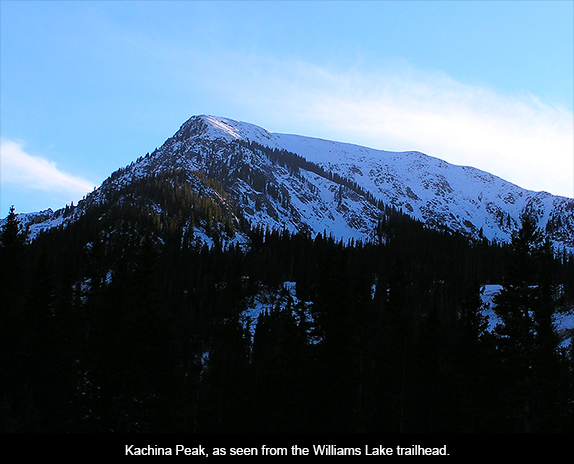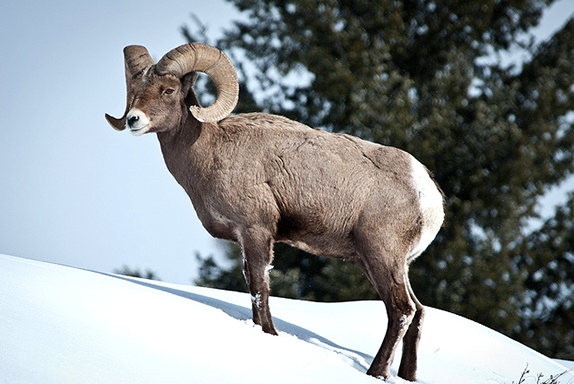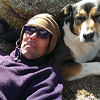
The first time I climbed Kachina Peak, the apex of the Taos Ski Valley in the Sangre de Cristo mountains of northern New Mexico, I was 35 years old.
I was no expert skier or snowboarder. But I was on drugs given me by the VA following a deployment to Iraq. I was feeling a little disembodied. I also felt time was running out. That nothing mattered. And I was curious. At the top of one of the ski lifts I saw a sign with a skull and crossbones on it. There was a path leading up and away from the sign. It was like some sort of invitation. Within a few minutes I found myself completely alone, stumbling across an empty ridge with my snowboard across my shoulders.
Several times I approached the edge of the ridge only to shrink back in amazement. The terrain was incredibly steep. I had never seen anything so steep. Even in my drugged state, it was clear that going over the edge without someone nearby to mark the spot was a foolhardy thing. But there was no one around. So I kept going. The sky was very blue. One side of the ridge held snow. The other side was all rocks. It was spectacular to look back and forth between the two worlds standing in such stark contrast: snow, rocks, snow, rocks. It seemed to echo and reflect my own internal landscape.
For some time I had been living with the uneasy feeling that I was existing in two worlds, unable to find footing in either. There was the reality of Iraq that was etched within me, a world of degradation and horror and fear and loss and destruction, and the reality of this world, our world, a world that seemed entirely unaware of and unaffected by the war. How was that possible?
I hiked on, growing more delirious with each step, gaping at the silent wonder of the mountains around me.
By the time I spotted the Ski Patrol, it felt as if I had been moving for hours. He was out ahead in the distance, perched high on the mountain. I figured he had been called in to escort me down, but I couldn’t figure out how he got ahead of me. What I got close, he had words for me. Certain resort rules and policies had been broken.
I spoke to his boots because the slope was very steep and he was standing above me. Didn’t I see the rope? What rope? I couldn’t remember any rope. In my state, I could have crossed over a dozen ropes and not noticed.
I was at a loss to respond, so I said the first thing that entered my head.
“I was summoned up here by a great power,” I told him, shielding the sun from my eyes with one hand and gripping my snowboard with the other.
“Is that right?” he said.
“Yes,” I replied, only then noticing the Ski Patrol had a long dark braid. I had never seen a Ski Patrol with a braid. Finally he spoke, weighing each word.
“I understand that more than you may know. Go on. But don’t do this again.”
“Okay,” I said. I took my last steps up the mountain. There was nobody else there. Tibetan prayer flags fluttered above a pyre marking the crest. The view was astonishing, unbelievable. My heart was pounding in my ears.
“Look,” the Ski Patrol said. “Bighorn.”
I looked where he gestured. Near a cluster of rocks a short distance from us, huddled together, were three bighorn sheep. I had never seen bighorn before. I crouched down as though someone had shot my knees out. It was one thing to absorb the view, but to come upon these animals with their curving distinctive horns, resting peacefully before us, was like a jolt of electrical current.
Then, over the gusts of wind, the Ski Patrol with the long braid began singing a prayer song.

Since learning about the plans to build a chair lift to the top of Kachina, I have been visited in my dreams by a bighorn. He comes over a ridge where I am climbing in the mountains and we look at each other. The sight of him fills me with a deep joy.
I realize now that what I experienced on that mountain was the grandeur and sanctity of life. In the harmony between rock and snow and bighorn and sun and wind and man, Kachina was offering me a path towards revival and restoration, a way to reestablish my essential decency.
I do not think Louis Bacon, the new owner of Taos Ski Valley, knows what he is destroying by building a chair lift up the nose of Kachina. I do not think that he cares about the bighorn sheep that will shy away from the clanking machinery capable of delivering 1,400 people an hour to that sacred spot. Yes, there will be an uptick in ticket sales for a year or two, the novelty of being carried to 12,450’ in the Southern Rockies, but interest will subside. The terrain is steep and treacherous. Kachina will come to be viewed as something to be challenged and conquered.
Her real power, the power to call out to us, to arrest us in our tracks, to revive us, will be lost. We will no longer notice her song over the relentless activity of the chair lift, the milling crowds jockeying for the perfect selfie. And in forty or fifty years, as the snowpack in the Southern Rockies recedes, ravens will perch on the lift towers and crap on the motionless chairs below—in summer and winter alike.
My tone grows dark because I know this intrusion of machinery into the mountain is wrong, even if the U.S. Forest Service has decided that the lift will not “threaten the environment.”
I find it difficult to accept that my son will never know Kachina without giant towers and cables and bullwheels bolted into her. Visitors to neighboring Wheeler Peak, looking towards the Taos Gorge in the distance, will be constantly reminded that a ski resort is near, that no mountaintop is sacred.
But just because he may not remember it doesn’t mean we shouldn’t go. And that is why I must take him while I can. Carry him if I have to. Before the trucks and helicopters start to churn.
So I can show him the spot where the sheep were huddled, where the Ski Patrol with the long braid sang his prayer song into the blue sky, where my knees were blown out from underneath me—and where I did not die, but lived.
(Photo credits: Kachina Peak by David Herrera, Big horn sheep by Tucker Hammerstrom)



Responses to “Silencing Kachina”